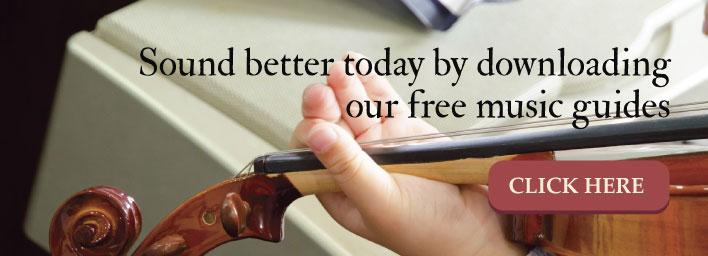
Mastering a skill like playing the violin takes dedication and continual practice. And although fingering exercises that extend your range and dexterity are one of the best methods to improve your overall skill, it’s not always practical or convenient to practice on your actual instrument. Often you’ll find yourself waiting in line, traveling, or in similar situations where it’s impossible to play your violin, but that doesn’t mean you can’t make progress.
There are many ways to improve your fingering technique even without using your violin. This list of exercises can help you increase your agility and build muscle memory, and they can be employed almost anywhere. So if you diligently apply, you’ll be able to see significant improvement in your fourth finger stretch in just a short time.
Finger Clap—this is a repetition exercise that helps extend muscle dexterity. Outstretch your left arm (although this isn’t imperative), and bring the tip of each (left-hand) finger to the base of your thumb, individually. It will be difficult to reach with your pinky finger without moving your ring finger as well, but the more you practice the easier this will become. It’s also a good idea to vary the “turns” of each finger so that you aren’t teaching your muscles to perform one specific pattern. Practice this for five minutes, rest for five, and then do it again.
Finger Stretches—much like the previous exercise, this can be done anywhere and builds your violin fingering agility and strength. With your left hand relaxed, fingers making a “C” shape, quickly tighten the fingers into a position that resembles an “e” in sign language. Hold this tension for a count of 10, and then relax your fingers again. Repeat this exercise five times, and then as you develop more flexibility, increase the amount of repetitions.
Pressure Strengthening—for this exercise, you’ll bring each one of your finger tips to the tip of your thumb and squeeze for 5-10 seconds, then release. Be careful with your third and fourth finger here, typically they’re not as strong as your thumb or your first and second fingers and you don’t want to injure yourself or get a painful cramp.
Since finger position is very important on the violin, you can also improve violin fingering knowledge and ability by using other resources. Many new programs are specifically made to help musicians improve their skills.
Violin Apps—another great method for improving your violin fingering skills is to download one or more violin apps that include practice templates, games, and other exercises designed to increase your speed and accuracy. A few excellent ones include:
- Fiddle Companion—available on your iphone or ipad for $2.99, this app features tons of great tools for violinists. In addition to a chromatic tuner and tons of chord charts and scales, there are in app purchases and a metronome. This app provides a fast, easy way to check your finger position.
- Virtual Violin—is free for android users. It includes 32 note placement position to practice and play. Obviously, an app that can be downloaded to a smart phone isn’t going to be exactly like the violin, but playing around with the games here can help improve awareness.
- Violin: Magical Bow—is another free android app, but this one has some really fun stuff. A virtual bow that you can move, tons of great songs and a stunning fingerboard that you can actually use make it one of the most downloaded and celebrated violin apps available.
Violin Software—like apps, you can download a variety of software programs, either free, or for a small subscription charge that will help you develop your violin fingering skills. The interactive learning tools make it easy for any student to improve his or her precision, timing, and technique. Try:
- My Violin by emedia—is great for grade school students.
- Violin Lab in an online learning community that includes videos, exercises, and similar tools to increase your proficiency.
Create Your Own Learning Tool—while this isn’t always easy for every student, you can make your own first position fingering tool. Google images and print a copy of a “first position fingering chart” that will roughly equal the size of that portion of your fingerboard. If possible, print it on card stock; and if you really want to go all out, you can laminate it. The main idea is to provide yourself with a handy tool that you can use to practice finger placement. Hold the card in your left hand and practice the finger placement for the G, D, and A Major scales. Although it may seem silly, it will help you develop muscle memory and reach.
Like most instruments, building finger dexterity is an essential part of learning to play. However, with regular practice, you’ll be surprised by how quickly you can improve your violin fingering.

